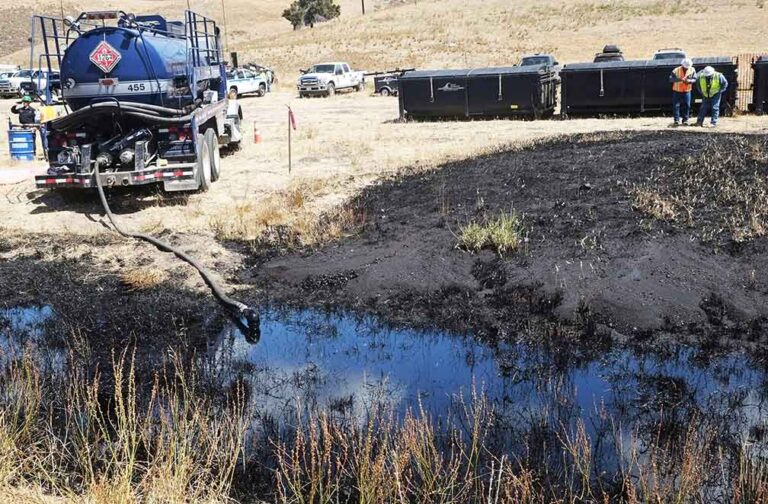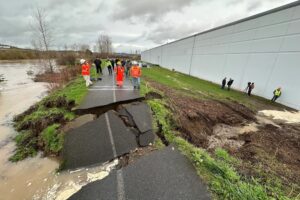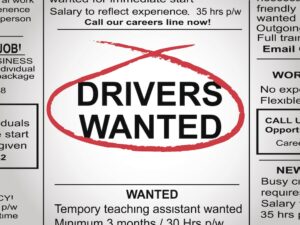SANTA MARIA, Calif. — The defeat of an ExxonMobil proposal to run thousands of truck trips a year in central California to transport oil from now-idled offshore platforms has intensified the focus on an even larger dispute: building a pipeline across the state to move the crude.
The Santa Barbara County Board of Supervisors rejected the interim trucking plan Tuesday on a 3-2 vote, denying the company a crucial step in its hopes of resuming production at the decades-old trio of drilling platforms. The company has said trucking was the only option to transport crude to markets until a pipeline is available.
In a separate proposal under review by regulators, Houston-based Plains All American Pipeline wants to replace a pipeline that was shut down in 2015 after causing California’s worst coastal spill in 25 years. For decades, that line had been the link between the platforms in the Pacific and processing plants on shore.
A complex environmental review of the pipeline plan is not expected until October. The emerging debate is playing out amid the global climate crisis, as the state moves toward banning gas-powered vehicles and oil drilling, while record gas prices have left consumers with sticker shock at the pumps.
It wasn’t immediately clear if ExxonMobil would try to challenge the decision in court.
Ben Oakley, manager of the California coastal region for the Western States Petroleum Association, said the supervisors “chose to make California even more reliant on imported energy at a time when Californians are already struggling with some of the highest energy costs on record.”
The trucking proposal and the pipeline development have been opposed by environmentalists, who want the state’s transition to renewables accelerated and point to recent spills and potential threats from aging equipment.
With the state dotted with oil infrastructure, “sticking a Band-Aid on these pipelines is not going to protect coastal resources,” said Julie Teel Simmonds, a senior attorney with the Center for Biological Diversity, an environmental group. Pipelines and platforms built decades ago “are posing a big threat because they’re just continuing to age and corrode.”
California Democratic U.S. Sen. Alex Padilla is among those who oppose rebuilding the pipeline, bluntly warning of future risks.
The Plains pipeline was shut down on May 19, 2015, when a corroded section above ground and running west of Santa Barbara ruptured, sending 140,000 gallons (529,958 liters) of oil onto a state beach and into the ocean.
ExxonMobil proposed sending up to 24,820 tanker trucks a year on coastal Highway 101 and State Route 166 for up to seven years or until the pipeline is repaired or replaced.
But recent oil spills brought renewed scrutiny to the issue. In May 2020, a tanker truck crash off State Route 166 spilled more than 4,500 gallons (17,034 liters) of oil into the Cuyama River. And last October, an offshore pipeline break near Huntington Beach released at least 25,000 gallons (94,635 liters) of crude that closed beaches and took a deadly toll on sea life along one of the world’s fabled surf breaks.
Californians have taken a harder look in recent years at the state’s oil and gas industry, which directly and indirectly supports over 365,000 jobs and has an annual output of over $150 billion, one study of 2017 data estimated.
Climate change is expanding the threat of wildfires, drought and tidal surges, and the state has positioned itself as a global leader in renewable energy and pioneering policies intended to slow the planet’s warming. The state plans to ban the sale of new gas-powered cars and trucks by 2035 and end oil production a decade later.
Supervisor Steve Lavagnino said California is still years away from being able to eliminate oil and gas in favor of alternative energy sources.
“The reality is: as much as we want that to happen, as much as I have voted for it to happen, it’s not there yet and we have to continue to produce fossil fuels as we transition,” he said.
The Associated Press is an independent global news organization dedicated to factual reporting. Founded in 1846, AP today remains the most trusted source of fast, accurate, unbiased news in all formats and the essential provider of the technology and services vital to the news business. The Trucker Media Group is subscriber of The Associated Press has been granted the license to use this content on TheTrucker.com and The Trucker newspaper in accordance with its Content License Agreement with The Associated Press.














